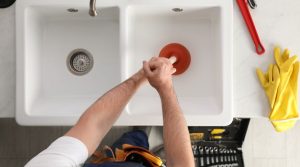Over time, air will build up in your central heating system. This makes cold spots, and the panels’ ability to pump out heat becomes less effective. So, bleeding the radiators in your home is one of the easiest things you can do to improve how well they work, which will make your home more comfortable.
The video below, which is hosted by Craig Phillips, explains this simple process best. Remember him? Who was Big Brother 1’s all-around good egg? Anyway, it’s less than 3 minutes long, so give it a look. There are also some easy instructions below.
How to Leak Radiators
You will need;
- Flat head screwdriver
- or a radiator key
- Old rags/sponge
Step 1:
First, turn on the heating and warm up the radiators around your home. This will also make the radiators’ pressure go up.
Step 2:
Walk around each radiator and make a note of the ones with cold spots, which are usually near the top of the panel. Here is where all the air has gathered.
Step 3:
Turn off the heat, and once the radiators have cooled down a bit, you can start the bleeding process. If you don’t have a bleed key, some valves have a slot where a flathead screwdriver will fit.
Use the radiator bleed key, which should be made of brass if possible, to let out the extra air. Turn the square bleed screw or screwdriver slowly in the opposite direction of a clock. You can hear the hissing sound of the air escaping. Use the rags or sponge to catch any water that drips. Once all the air has been let out, the water will come out in a jet instead of a drip. Quickly close the valve and tighten it.
Bleed each radiator one at a time until all are done.
Step 4:
Turn on the central heating again and look again for cold spots. As many times as needed, repeat the steps.
Step 5:
If none of this works, the pressure in the boiler may not be high enough to force the air out. Follow the instructions, which are usually written on the front of the boiler, to bring the pressure back up.
Also, if the process works, the pressure in the boiler may have gone down and may need to be topped up.
That’s all there is to it.





